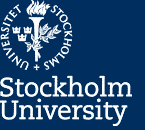
When two species interbreed, their hybrid progeny is often sterile and less likely to survive because the genomes from distantly related species are rarely compatible. However, in some cases hybrids are viable and some of them even have extreme phenotypes that may or may not be beneficial when facing new environmental challenges. Researchers call these hopeful monsters because they may survive and thrive in new ecological niches. Sometimes an entirely new species emerges through hybridization.
“Studying hybridization is to study the processes of merging and diverging of species. This can help us answer a question that already intrigued Darwin, which is still one of the most fundamental questions in evolutionary biology: How do new species evolve, says Rike Stelkens, Department of Zoology, Stockholm University. She will investigate how hybridization increases genetic diversity, and how this may protect populations from extinction in a changing world.”
Wallenberg Academy Fellow Rike Stelkens uses the fast and flexible model system Baker’s yeast to observe evolution in her laboratory over hundreds of generations in a few weeks time – an approach called experimental evolution. She will take populations of yeast and evolve them in different environments for many hundreds of generations so they adapt to new conditions. Then she will generate hybrids between these lineages and expose them to novel and stressful environments. Over the course of these evolution experiments, she will sequence the genomes of hybrid and parent populations to investigate whether the genetic diversity that results from hybridization helps yeast to survive in these new environments.
“I hope that my research helps to advance the field of speciation genomics. So for instance, what makes a species different from other species? Which distinct features of the genome, the phenotype, the behaviour and the biology of a species make it so different that it cannot or does not interbreed with other species? Studying the effects of hybridization on fitness can also help us understand how to better manage endangered populations, and how to protect ourselves against new diseases that emerge due to genetic exchange between pathogens.”
What does this funding mean for your research?
“It allows me to venture into new and exciting fields of research that are also concerned with hybridization and environmental change. For instance, I want to understand better how new pathogenic microorganisms and cancer cells evolve and respond to different selection pressures. This funding allows me to use the newest technologies to sequence and edit yeast genomes for forward genetics approaches, to really understand the genetic basis of adaptation and evolutionary change. It also means that I will be able to share this journey with other people that want to work with me, and that makes me very happy!”
Read more avbout Rike Stelken's research.



